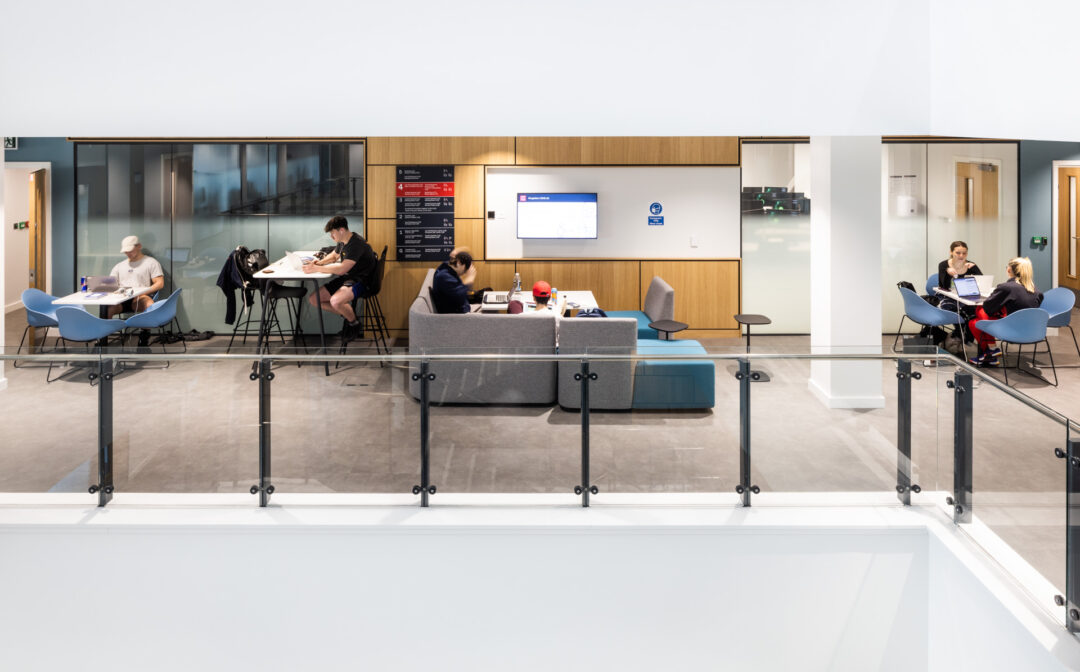State-of-the art facilities, beautiful outdoor spaces, and lively places to catch up with friends. Students want to be back on campus, with online lectures taking a back seat to complement the in-person experience. Group discussions, one-to-one tutor time, and face-to-face teaching are all expected—and in high demand. Throw in the need for regular informal interaction and it’s no surprise learning spaces are under pressure to evolve.
But finding the right solution isn’t always straightforward.
Today’s students need a wide variety of spaces to support their individual learning styles, study goals, and personal wellbeing. Technology-enabled active learning (TEAL) environments that facilitate a more collaborative, flipped classroom approach. ‘Hyflex’ spaces to teach students on campus and online at the same time. Private and group study areas. Bring your own device spaces. Places to hang out between classes. All designed to support modern pedagogies.




For universities, this is widely accepted as the way forward. But what works for students doesn’t necessarily work for staff. Academics still want private spaces for head-down work. They also want control over their interaction with students, so there’s no real desire to spend extended time in informal, shared collaborative spaces. Like the rest of us, they also want to work from home when it makes sense.
Responding to both needs is one thing. But the real conundrum is doing so in a way that also supports the university’s long term environmental, social, and economic goals.
I believe the starting point is identity.
Creating spaces with soul
Despite often having similar aims—to be forward thinking, collaborative, and inclusive—every university has its own cultural identity; that one thing that makes it unique. This usually comes from campus location, context, and culture.
Hosting ongoing conversations with students and staff helps us understand which environments they identify with and the type of spaces they need. By knowing what gives these places meaning, we can create well-designed spaces that reflect the university’s unique soul—drawing on lived experience and modern needs, rather than designing from theory.



Reflecting a welcoming home
Through recent conversations with students, and as part of our Post Occupancy Evaluation (POE) Inhabitant series, it’s clear that people want more human-scale, homely spaces on campus. Students shy away from staying longer in big spaces that are too buzzy, such as large atria, instead preferring quieter, cosier environments. The same applies to academics, who want spaces that replicate the comforts they have while working from home, in addition to attractive environments that create a positive campus experience.
Using small scale sample areas, we can rapidly prototype new ideas and see what works for students, staff, and academics, before designing more permanent solutions based on those learnings.
Getting ownership right
The success of any space is determined by the people who use it, but there’s a fine line between public ownership and group territory behaviour.
The shared spaces we create should offer a sense of belonging, without being claimed by one group only. Getting the right management processes in place is critical, for example, allowing a percentage of spaces to be bookable so they’re available to those who plan to come to campus.
Shared spaces are also favourable from a sustainability perspective. Universities are aiming to reduce their carbon footprint and multipurpose environments allow for greater space utilisation, compared to rooms or areas associated with a certain person, team, or school that are only occupied for a fraction of the time.


Creating attractive environments that bring people together
Providing the right mix of spaces to meet the distinct—and sometimes competing—needs of students, faculty, and the university is no small feat. But by focusing on the university’s unique identity, providing appropriate, comfortable learning environments, and putting the right management structures in place, I believe we can create attractive campuses that bring everyone together.
But what do you think? Visit our Universities team on stand 13 at AUDE Annual Conference 2023, where they’re posing this question. We’d love to hear which spaces you identify with and enjoy using—and which you don’t.
